Essential Tips for Maintaining Your Pool During Heatwaves
August 28th, 2024
August 28th, 2024
As summer stretches into a prolonged heat wave, the sun becomes a relentless partner, turning poolside lounging into a necessity. While the thought of diving into cool, refreshing water is always tempting, maintaining that perfect aquatic oasis during extreme temperatures can be a challenge. Pools, like any cherished companion, require a bit of care to ensure they remain inviting and safe.
Last summer, I found myself in a similar situation. The temperatures soared, and my pool, once a sparkling blue refuge, began to show signs of distress. Algae began creeping in, and the water seemed to evaporate faster than I could refill it. It was a swift lesson in the importance of proactive measures to maintain its pristine condition. Indeed, protecting your pool in scorching heat isn't merely a matter of aesthetics; it also involves safeguarding against potential damage and ensuring the water remains safe for swimmers.
Each pool owner knows the routine—skimming leaves, balancing chemicals—but when the mercury rises, these tasks take on a new urgency. Unchecked, the heat can turn water chemistry into a volatile equation, making maintenance more demanding. But with the right strategies, these challenges transform into manageable tasks, ensuring your pool remains a source of joy rather than concern. Let's explore these six key ways to keep your pool in top shape, even as the summer sun blazes down.
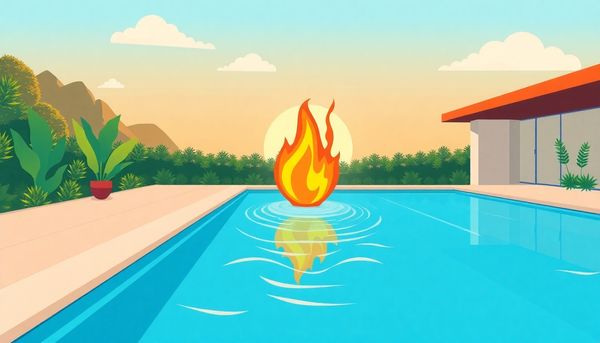
Hot weather can turn your pool into a chemistry experiment. Under intense sun, maintaining water balance becomes crucial. During a scorching spell last summer, I learned this firsthand when a lazy testing schedule left my pool resembling a green swamp rather than a sparkling oasis. Testing your water more frequently during heat waves reveals changes before they spiral out of control. When temperatures soar, consider upping your testing routine from weekly to two or even three times a week.
Chlorine, your pool’s best friend, is the most volatile under the sun’s harsh gaze. It degrades rapidly in UV rays, reducing its effectiveness in sanitizing your pool. If you’re hosting more pool parties or taking advantage of the cooling waters yourself, remember that increased usage can further impact chemical balance. These factors make frequent testing invaluable. A digital test kit can be your trusty sidekick, measuring essential elements like pH, alkalinity, and chlorine levels.
Keeping chlorine levels between 1 and 3 PPM is ideal, with 3 PPM offering the best protection. When levels dip, be prepared to act swiftly. Shocking the pool weekly becomes a smart strategy, helping maintain an active chlorine presence. And, if your chlorine seems to vanish too quickly, a stabilizer like Cyanuric Acid can prevent it from burning away under UV rays. Regular checks not only keep your pool pristine but provide peace of mind, ensuring each swim is refreshing rather than risky.
When summer heat intensifies, keeping a watchful eye on chlorine levels becomes crucial for maintaining pool clarity. The relentless sun has a knack for gobbling up chlorine, your pool’s primary defense against unsightly algae and harmful bacteria. As temperatures soar, the sun's UV rays hasten chlorine’s breakdown, leaving your pool vulnerable and in need of a boost. Just like sunscreen needs frequent reapplication when lounging poolside, your pool's chlorine levels demand regular checks and adjustments.
During a heatwave, it's wise to test the water at least twice a week. This vigilance isn't just about keeping your chlorine between 1 and 3 PPM; it's about understanding your pool's unique response to the rising mercury. Increased swimmer activity also plays a part, as more bodies in the water mean more contaminants and a quicker depletion of chlorine resources. So whether it’s back-to-back cannonball contests or leisurely floating sessions, each splash can tip the chemical balance.
When you notice chlorine levels dipping, consider a shock treatment. A dose of cal-hypo or liquid chlorine can be just what your pool needs to fend off algae invaders. Remember, non-chlorine shock solutions also work wonders by revitalizing ‘used up’ chlorine, keeping the water fresh without increasing harmful chloramines. Keeping an eye on these levels ensures that you and your fellow sun worshippers can enjoy the pool without interruption, even during the hottest of days.
In the battle against summer's scorching sun, your pool's chlorine often needs a trusty ally—cyanuric acid, commonly called CYA or stabilizer. On particularly sunny days, UV rays relentlessly break down chlorine, leaving your pool vulnerable to algae and bacteria. To counter this, stabilizers act like a sunscreen for your pool, shielding the chlorine from the sun's relentless assault. When used correctly, they can significantly enhance chlorine's longevity and effectiveness in maintaining a clean and safe swimming environment.
Imagine balancing a beach umbrella just right to get the perfect shade; that's how CYA works with chlorine. For most pools, the sweet spot for CYA levels is between 30 and 50 PPM, though saltwater pools may thrive with a bit more, around 60 to 80 PPM. Saltwater generators labor extra hard during peak sun to maintain chlorine levels, making stabilizers all the more crucial. Too much CYA, however, can be counterproductive, as it might require draining and refilling your pool to correct. So, it’s all about finding that perfect balance.
As a pool owner who has experienced the frustration of chlorine disappearing faster than morning dew, I can vouch for the magic of stabilizers. By keeping a close eye on CYA levels, especially during heatwaves, you ensure your pool stays crystal clear and inviting. A small adjustment with stabilizers can turn the tide in your pool maintenance routine, saving both time and water.
Under the sweltering sun, your pool becomes a playground not just for swimmers, but also for unpredictable water chemistry. In intense heat, weekly checks simply won’t cut it. Water conditions can change in the blink of an eye, making it crucial to step up your testing game. Try squeezing in pool tests two or three times a week. This frequent monitoring allows you to catch any chemical imbalances early, preventing issues before they escalate.
Chlorine, your pool’s safeguarding hero, is especially vulnerable. Those UV rays you love are chlorine’s nemesis, breaking it down faster than you might expect. With more pool time during heat waves — because who can resist a cool plunge on a scorching day? — chlorine gets depleted even quicker. Keeping an eye on these fluctuations means you can act fast, whether that’s adding a shock treatment or tweaking your stabilizer levels to maintain ideal chlorine readings.
A digital test kit can be a lifesaver, providing you a snapshot of your pool’s health. It measures free chlorine, total chlorine, and other vital parameters, ensuring you’re never in the dark about your pool’s condition. By increasing your testing frequency, you’re not just maintaining a pool; you’re ensuring a safe, inviting oasis, ready for every spontaneous splash and summer party. So, grab that test kit and keep those waters in check.
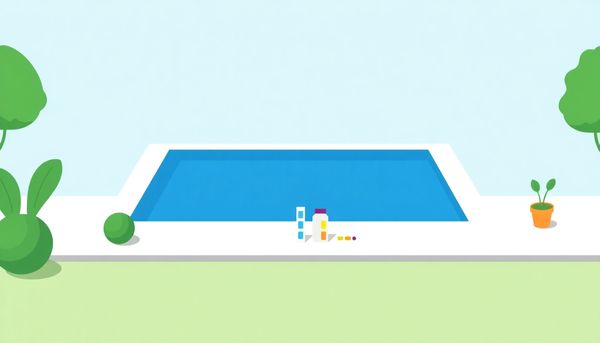
The sun has a knack for turning your perfectly balanced pool into a breeding ground for chaos. When temperatures soar, chlorine, your pool's primary defender, needs a little backup. It’s not just the heat that breaks it down; prolonged exposure to sunlight acts like a thief in the night, robbing your pool of essential sanitizers. During a particularly scorching summer, I found myself testing the waters three times weekly, a routine that saved me from a green, uninviting mess.
To truly boost chlorine's effectiveness, a weekly shock treatment is your ally. This isn't just for emergencies; it's your pool's regular tune-up. Chlorine-based shocks, such as cal-hypo or liquid chlorine, do more than just maintain levels—they actively combat contaminants and algae. However, if your free chlorine levels are stable, consider an oxidizer instead. This non-chlorine shock rejuvenates your chlorine, tackling chloramines that cause that telltale pool smell. During one blistering July, using an oxidizer not only maintained clarity but also kept my pool from becoming an algae resort.
Don’t overlook the importance of Cyanuric Acid (CYA), especially when the sun’s UV rays are relentless. Acting as a sunscreen for chlorine, CYA ensures it doesn’t evaporate faster than you can say “summer swim.” Keep it between 30 to 50 PPM for traditional pools and a bit higher for saltwater systems. Just remember, balance is key—too much CYA, and you’ll find yourself draining and refilling your pool. Implement these strategies, and your chlorine will stand strong, even when the mercury climbs.
When the summer sun blazes, your pool's chemistry turns into a delicate dance that demands attention. The heat doesn't just invite swimmers—it's a call to action for algae and evaporation, too. I've learned from maintaining my own backyard oasis that regular water testing becomes crucial when temperatures soar. Instead of the usual weekly check, ramp up your testing to two or three times a week. This frequent monitoring prevents surprises and ensures your chlorine and pH levels remain stable.
Chlorine, your pool's unsung hero, suffers the most in the sun. It breaks down under UV rays, and with increased pool use, its effectiveness can wane. To combat this, consider shocking your pool weekly, especially after heavy usage or intense heat. Shocking not only replenishes chlorine levels but also tackles contaminants that might have snuck in during those lively pool parties.
Another trick is to adjust your cyanuric acid (CYA) levels. CYA acts like sunscreen for chlorine, preventing it from evaporating under the sun’s relentless gaze. Aim for a CYA range of 30 to 50 PPM, but keep it slightly higher for saltwater pools. This balance keeps your saltwater generator from overworking, ensuring longevity and efficiency.
As you juggle these adjustments, remember that a well-maintained pool is more than just clean—it’s an invitation to relax, enjoy, and cool off in style.
When the sun blazes overhead and the heat is unrelenting, your pool's chlorine stability can quickly become a concern. Chlorine, the indispensable guardian against bacteria and algae, tends to degrade swiftly under the scorching sun. This chemical's vulnerability to UV rays necessitates a strategic approach to maintaining its effectiveness. One of the best allies in this battle against the sun's relentless assault is Cyanuric Acid (CYA), a stabilizer that acts like sunscreen for your chlorine.
Think of CYA as the secret weapon for enhancing chlorine longevity. Ideal levels of CYA should hover between 30 to 50 parts per million (PPM). However, if you have a saltwater pool, slightly higher levels, between 60 and 80 PPM, might be beneficial. This is because saltwater generators inherently lack CYA, causing them to work harder during peak sun exposure.
While adding CYA can help, it’s crucial to strike a balance—excessive levels could lead to a reduction in chlorine's sanitizing ability. Regular testing can prevent these complications, ensuring that your pool remains a safe and inviting oasis. Also, bear in mind that once CYA levels exceed the desired range, the only remedy is partially draining and refilling the pool. By keeping a harmonious ratio between CYA and chlorine, you can enjoy a sparkling pool, even during the hottest of days.
When the mercury soars, algae see an open invitation to crash the pool party. They thrive in the warmth, taking advantage of still, nutrient-rich waters. To outsmart these unwelcome guests, your pool needs a proactive defense strategy. Start by cleaning those surfaces more frequently. Brushing the pool walls and floor every few days disrupts algae spores before they find a home. Vacuuming becomes an ally, whisking away debris where algae might settle.
Enter the robotic pool cleaner, a game-changer in maintaining sparkling waters. These devices are perfect for busy schedules, tirelessly scrubbing and vacuuming at the touch of a button. In my own backyard oasis, our robotic cleaner became indispensable during a particularly scorching summer, tirelessly working while we enjoyed a lemonade in the shade.
Keeping the water in constant motion is another essential tactic. Algae prefer stagnant environments, so increase your pump run time during heat waves. If you typically let it churn for eight hours, consider upping it to ten or even around the clock if you have a variable-speed pump. Just last summer, when temperatures hit triple digits, our pump ran nearly non-stop, preventing any chance of algal bloom.
By integrating these habits into your pool care routine, you create an unwelcoming environment for algae while keeping your pool inviting for everyone else.
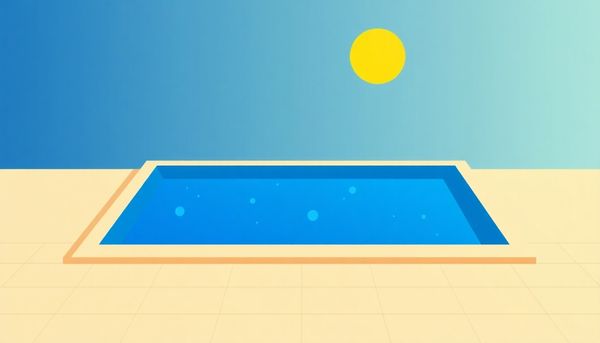
Stabilizers, those often-overlooked pool protectors, play a crucial role in maintaining a crystal-clear oasis during scorching heat waves. Think of Cyanuric Acid (CYA) as the sunscreen for your chlorine, shielding it from the relentless assault of UV rays. Without stabilizers, chlorine can dissipate rapidly, leaving your pool vulnerable to algae blooms and murky waters.
Having recently dealt with a spell of intense heat, I decided to revisit my pool maintenance routine. My water chemistry was all over the place until I adjusted the CYA levels. By ensuring they hovered between 30 and 50 PPM, I noticed a remarkable difference in chlorine retention. This simple adjustment kept my chlorine from vanishing in the midday sun, saving me time and reducing the need for constant dosing.
Now, a word of caution: while adding stabilizers is beneficial, moderation is key. Overloading your pool with CYA can lead to a whole new set of issues, as the only way to lower high CYA levels is through partial draining—a task I learned the hard way one summer. Remember, balance is essential. Aim for that sweet spot where your chlorine level is about 7.5% of your CYA for optimal efficiency.
For saltwater pool owners, this becomes even more critical. Keeping CYA levels slightly elevated, perhaps between 60 and 80 PPM, can greatly ease the workload on your saltwater generator, ensuring smooth sailing even in the sunniest of days.
On a sweltering summer afternoon, the shimmering blue of a pool can seem like the ultimate sanctuary. Yet behind that inviting sparkle lies a delicate balance of chemistry, which the heat is eager to disrupt. High temperatures expedite evaporation and create an ideal environment for algae, throwing your pool’s chemistry into a whirlwind. Vigilance becomes your best ally, requiring more frequent testing than the usual once-a-week routine. As the mercury climbs, consider increasing your checks to two or three times a week to preemptively catch and correct any imbalances.
Heat and sunlight are notorious for their ability to dismantle chlorine, the very agent that keeps your pool water safe. A reminder that sunny days, although beautiful, are also busy days for chemical maintenance. Extra swim sessions, common in hot weather, further deplete chlorine levels, demanding a watchful eye. Regular assessments can reveal when your chlorine dips below the optimal range of 1 to 3 PPM. A quick corrective measure would be to shock the pool, either with a chlorine-based shock or a non-chlorine oxidizer, depending on your pool's needs.
Cyanuric Acid, or CYA, acts as a shield, guarding chlorine from the sun’s relentless UV rays. Maintaining proper CYA levels, ideally between 30 and 50 PPM, helps preserve your chlorine's efficacy. For saltwater pools, a slightly higher CYA can ease the burden on your saltwater generator, ensuring it doesn't overwork under the blazing sun. Keep this chemistry in harmony, and your pool will remain a refreshing oasis all summer long.
When the sun blazes high in the sky, your pool's chlorine needs a shield. That's where stabilizers, especially Cyanuric Acid (CYA), come into play. They act like sunscreen for your water, preventing chlorine from vanishing under the relentless gaze of UV rays. Without protection, chlorine dissipates quickly, leaving your pool vulnerable to algae and bacteria infestations.
In scorching weather, maintaining a CYA level between 30 and 50 parts per million (PPM) is a game-changer. If you're using chlorine tablets or dichlor granules, these often come with built-in stabilizers, making your job easier. However, if your chlorine source lacks CYA, adding a separate stabilizer will fortify your defenses. It’s a balancing act—too little, and you risk chlorine depletion; too much, and you could face the cumbersome task of diluting your pool water.
For those with saltwater pools, the stakes are even higher. Saltwater generators naturally lack CYA, causing them to work overtime under intense sunlight. Many pool owners find that maintaining a slightly higher CYA level, around 60 to 80 PPM, eases the burden on their generators. This adjustment not only conserves energy but also ensures a consistent chlorine level, keeping your pool pristine despite the heat. Protecting chlorine with stabilizers is like giving your pool a summer-ready armor—strong, reliable, and ever-ready to fight off the sun’s unyielding rays.
#

Algae can be the uninvited guest at your pool party during heat waves, thriving with a vengeance in warm, sunlit waters. To keep these pesky green invaders at bay, a proactive approach is essential. Regular maintenance forms the backbone of your defense strategy. Scrubbing your pool walls and floor more frequently in hot weather helps disrupt algae's growth cycle. Investing in a reliable robotic pool cleaner can save time and effort, doing the hard work of vacuuming more often as temperatures soar.
Maintaining a consistent water flow is another key tactic. Running your pool pump more frequently during sweltering days not only keeps water circulating but also ensures your chemicals are evenly dispersed and effective. If you're accustomed to an eight-hour pump schedule, consider extending it by a couple of hours. For those particularly scorching days, a variable-speed pump running continuously at a lower speed can keep things in motion without breaking the bank.
Using algaecides can also provide an extra layer of protection. These chemicals, when used as part of a balanced pool maintenance routine, can inhibit algae spores from taking root. However, they shouldn’t be your primary defense; think of them as a support team. By combining consistent cleaning, effective circulation, and judicious chemical use, your pool remains a refreshing oasis rather than a green swamp.
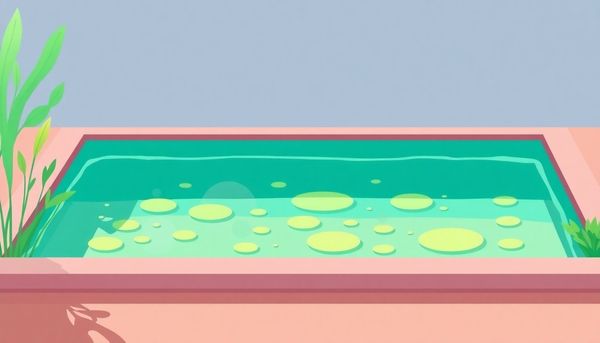
When temperatures soar, algae see their chance to invade your pool, turning what should be a refreshing oasis into a slimy battleground. Unlike humans who seek shade, these tiny green troublemakers thrive under the sun's relentless rays. Their growth is not just an eyesore but a sign that your pool’s chlorine is being depleted faster than usual. If you’ve ever found yourself dealing with this unwelcome guest, you’ll know how quickly it can take hold.
To combat this, increase the frequency of cleaning—think of it as giving your pool a bit of extra love during those scorching days. Scrub the walls and floor diligently, more than once a week, to dislodge any budding algae spores. Those spores can't cling if there’s nothing for them to cling to. Vacuuming more often also helps whisk away the problem before it can settle. For those not keen on the extra manual labor, consider enlisting the help of a robotic pool cleaner. These automated assistants can tirelessly work to keep your pool pristine, giving you more time to enjoy rather than toil.
Additionally, keep your water in constant motion. Running the pool pump for longer hours disrupts algae’s ability to thrive, while also ensuring better distribution of chemicals throughout the water. If your regular pump schedule is eight hours a day, extend it during heatwaves. Constant circulation not only discourages algae but also ensures a consistent chemical balance, keeping your pool invitingly clear.
When the thermometer spikes, your pool’s chemistry can turn into a volatile cocktail that demands frequent attention. Testing water once a week might suffice during milder days, but scorching temperatures require a more vigilant approach. During a particularly sweltering July, I learned this the hard way; neglect turned my pool into a green swamp in just days. To dodge such aquatic disasters, test your pool water at least two to three times weekly when the heat cranks up.
Heat and sun wreak havoc on chlorine levels, evaporating them faster than you can say “cannonball.” As UV rays pound relentlessly, your chlorine's ability to sanitize wanes. Add to that regular pool parties or swim sessions, and you have a recipe for chemical imbalance. It’s crucial to keep a close eye on chlorine dips; consider shocking your pool weekly to maintain that pristine sparkle. A trusty digital test kit becomes your best friend, helping you monitor everything from pH to Cyanuric Acid.
Remember, an ounce of prevention is worth a pound of cure. Early detection of chemical shifts not only saves you time and money but also ensures a safe swimming haven. By keeping a finger on the pulse of your pool’s chemistry, you’re not just maintaining water clarity—you’re safeguarding a place of relaxation and fun, even when the heat feels unrelenting.
Chlorine, your pool's silent guardian, takes center stage when the heat cranks up. When the sun beats relentlessly down, UV rays can gobble up your chlorine, leaving your pool vulnerable to unwanted guests like algae and bacteria. On those blazing days, test the water chemistry more frequently—aim for twice or even thrice a week. Think of it as a wellness check for your swimming haven.
A good friend of mine learned this the hard way one scorching summer when his pool turned green overnight. The culprit? Insufficient free chlorine levels. Ideally, you want free chlorine levels to hover between 1 and 3 PPM, with 3 PPM being the sweet spot. If levels dip too low, a swift dose of chlorine shock—whether it's cal-hypo, dichlor, or liquid chlorine—can rescue your pool from a potential algae attack.
But what if your chlorine levels seem fine, yet there's an odd chlorine odor or murky water? That’s where non-chlorine shock, also known as an oxidizer, steps in. This clever helper breaks down chloramines, those pesky compounds that cause the off-putting smell, and rejuvenates your chlorine's effectiveness. For saltwater pools, a little extra chlorine shock can prevent your saltwater generator from overworking, a common plight during heat waves.
Finally, don’t overlook the role of Cyanuric Acid (CYA) as a chlorine bodyguard. This stabilizer shields chlorine from UV degradation. Just keep CYA levels between 30 and 50 PPM (or slightly higher for saltwater pools), ensuring your chlorine doesn’t disappear faster than your ice cream melts on a hot day.
When the sun beats down relentlessly, your pool can quickly turn from a refreshing oasis into a chemical conundrum. That's where solar pool covers make their grand entrance, acting as a shield against the harsh effects of the sun. These covers, sometimes cheekily referred to as "solar blankets," do more than just lie around. They trap heat from the sun, warming your pool naturally and cutting down on the energy needed for heating. This is a double win: a warm swim and lower utility bills.
But warmth isn't their only trick. Picture this: a significant reduction in evaporation. On blazing days, water tends to vanish into thin air, taking with it carefully balanced chemicals. A solar cover can reduce evaporation by up to 95%, which means you’re not just saving water, but also maintaining your pool's chemical balance more effectively. It's a small investment with significant returns, akin to wearing sunglasses in the desert.
From personal experience, I've found that covering the pool at night can also work wonders. Cooler temperatures at night can lead to increased evaporation, but a solar cover curtails this process. By keeping the cover on when the pool's not in use, especially during those scorching summer days, you’re not just preserving water; you’re protecting the overall health of your pool. With the simple addition of a solar cover, your pool remains inviting and ready for that next splash, even when the heat decides to linger.
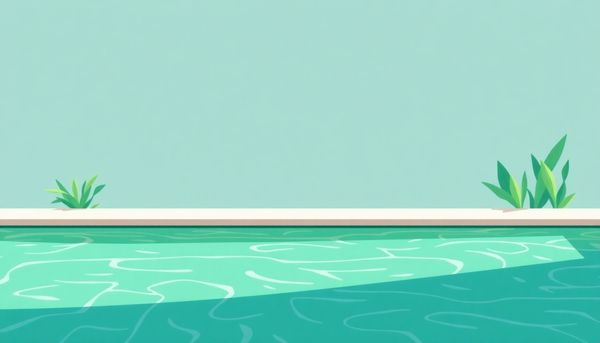
When the sun is relentless and the temperature soars, your pool's pump becomes an unsung hero, keeping your aquatic oasis pristine. A well-managed pump can be the difference between a sparkling pool and a cloudy mess. During a particularly brutal summer a few years back, I learned the hard way how crucial pump optimization is. Running my pump for the usual eight hours just didn’t cut it. With temperatures tipping over 100°F, my pool quickly turned into an unwanted science experiment.
For those sweltering days, consider extending pump operation beyond the standard duration. Adding a couple of extra hours can significantly improve water circulation, preventing algae from taking a foothold. If your pump is variable-speed, try running it continuously at a lower speed. This strategy not only keeps the water in motion but also ensures chemicals are evenly distributed, maintaining balanced water chemistry without the skyrocketing energy bill.
Moreover, night-time offers a reprieve from the heat, and utilizing this cooler period can be beneficial. Let the pump run at these times to circulate cooler water, which can help in balancing the pool's temperature and slowing down evaporation.
So, when the heat turns up, let your pump take a longer shift. It’s a small tweak with a big impact, ensuring your pool stays ready for those much-needed refreshing dips.
During the sweltering heat of summer, maintaining balanced water chemistry in your pool becomes a delicate dance. The sun can rapidly degrade chlorine, making routine checks more critical than ever. Testing your water two to three times a week, instead of the usual once, ensures you catch any chemical imbalances before they become problematic. This vigilance helps you adjust chlorine levels promptly, shielding your pool from unwanted algae invasions.
Chlorine, the steadfast guardian of your pool’s clarity, is particularly vulnerable under intense UV exposure. As sunlight breaks down chlorine, even a bustling pool day can tip the scales, necessitating swift corrective measures. Shocking your pool weekly with chlorine-based products can rejuvenate your sanitizer levels and combat the proliferation of algae and bacteria. For those using saltwater systems, a manual chlorine boost prevents undue strain on your generator, keeping it running efficiently.
Cyanuric Acid (CYA) plays a crucial role in this balancing act, acting as sunscreen for your chlorine. Maintaining CYA levels between 30 and 50 PPM helps protect chlorine from rapid degradation. For saltwater pools, a slightly elevated CYA level, between 60 and 80 PPM, can ease the load on your generator during peak sunlight. However, be cautious; excess CYA can only be corrected by partially draining your pool. By attentively managing these chemical dynamics, your pool remains a refreshing oasis, ready to offer solace from the summer heat.
A sun-drenched afternoon might be perfect for a swim, but it’s also a chlorine killer. The intense rays break down chlorine rapidly, leaving your pool vulnerable to algae and bacteria. To combat this, a stabilizing agent like Cyanuric Acid (CYA) becomes your pool's sunscreen. Without it, chlorine dissipates at twice the rate, leaving your pool defenseless. Ensuring your CYA levels are between 30 and 50 PPM is crucial for maintaining a healthy balance.
Last summer, my friend discovered this the hard way. Her pool, sparkling one day, turned green within a week, thanks to overzealous UV rays. After some troubleshooting, a proper CYA adjustment saved the day. She learned to keep her stabilizer levels in check, and her pool stayed clear for the rest of the season.
For saltwater pool owners, the stakes are even higher. Saltwater systems lack inherent stabilizers, meaning your generator works overtime under harsh sunlight. Maintaining CYA levels between 60 and 80 PPM can ease this burden, preventing unnecessary wear and tear on your equipment.
However, exercise caution: too much CYA can be just as problematic, requiring a partial water drain to correct. Striking the right balance keeps your chlorine effective, so you can enjoy your pool without surprise algae invasions. Whether under the blazing sun or a gentle glow, stabilized chlorine ensures your aquatic oasis remains a refreshing retreat.
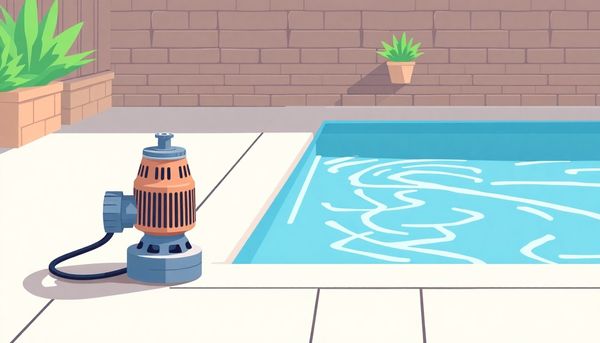
This article provided insights into maintaining your pool. Start your pool care journey today!
Want to become a pool maintenance expert? Our free Pool School course covers everything you need to know about pool care. From basic maintenance to advanced troubleshooting, you'll learn how to:
Join over 10,000 pool owners who have already transformed their pool care routine. Get started with our free Pool School course today!